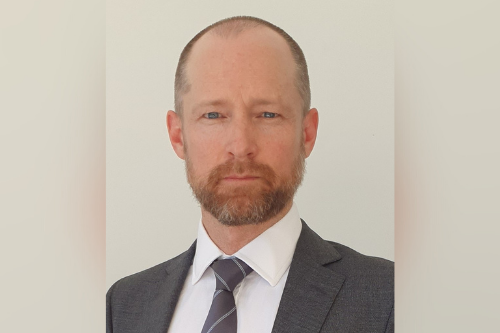

In Australia and around the world, the deadly Delta variant is rampant and lockdowns are still commonplace. Despite this gloom, for months, Morgan Stanley has predicted a bullish trajectory for the global economy.
In August, Morgan Stanley optimism scaled even higher, with a report that Australia had notched up its biggest quarter for deals on record: $70.9 billion in mergers and acquisitions. So is the stage set for a vaccinated, vibrant post-pandemic economy?
What do Australian insurance industry professionals think of this rosy scenario?
Just over a year ago many of them were preparing for disaster. Australian hospitals were admitting more and more COVID-19 patients. States started implementing lockdowns.
“We were quite concerned early on in the pandemic that we would see widespread foreclosures, cashflow struggling businesses that were unable to meet their monthly loan repayments and we would have widespread cancellations of insurance policies,” said Daniel Gronert (pictured), CEO of insurance premium funding company, Arteva Funding.
As the pandemic took hold, industry leaders like Gronert prepared for the worst.
“Then obviously businesses who were struggling, who don’t have insurance coverages, it’s a recipe for essential disaster,” he said.
But last year’s much anticipated economic disaster never arrived – at least for many businesses.
“But thankfully the opposite actually happened. It was probably mid-March, early-April 2020 that we started to be concerned and subsequently we tightened up some of our lending criteria to ensure that we could manage any expectations that businesses had so we could work with them if the pandemic did drag on,” he said.
By the middle of May 2020, the fiscal behaviour of Arteva’s clients had actually improved, even compared to before the pandemic.
“We saw less missed payments, we saw less cancellations and we saw very few requests from businesses or individuals to actually delay payments and that trend has really continued throughout the whole of the second half of 2020,” he said.
The trend has continued through 2021.
“To date we’re still seeing our loan arrears across our whole loan book, cancellation rates and missed payments rates actually at record lows. They’re lower than they’ve ever been,” said Gronert.
Rather than an economic crisis, in many cases, the pandemic has enforced belt tightening, savings and fiscal responsibility from individuals and businesses. This was a complete surprise to many in the insurance business, including Gronert.
“I think if you look across all of the major banks and a lot of the financiers reporting to the ASX recently, they’re reporting very similar trends, that arrears rates are at an all-time low,”
For example, said Gronert, a fellow CEO who runs one of the major banks told him recently that the bank was holding 40% more cash on deposit this year than they did even pre-pandemic.
Gronert expressed qualified optimism about the post-COVID future for the Australian economy.
“Now we’re starting to see that will potentially start to unwind, we’ve got the property market’s really running quite well, we’ve got a share market that’s recovered and continuing to perform well. I guess we’re into that interesting next phase where we’ve got to manage the recovery to an extent that it doesn’t start to impact asset prices and create bubbles and cause further headaches for us down the track,” he said.
Robin Barham (pictured below), CEO of Agile Underwriting Services, said in terms of the economic health of the insurance industry, COVID-19 isn’t that important. The industry’s natural cycle is the best indicator of potential economic success or failure.

“The COVID question is an interesting but slightly irrelevant question in that, as you know, the insurance market has a natural cycle and now is actually a good time to be launching products because in terms of pricing we’re at, or near, or at least approaching, a high point in the cycle and that’s a good time to come into the market with products when there’s not so many other people in the space,” he said.
Barham said there’s a positioning opportunity because at this stage of the cycle brokers are finding it difficult to get stuff placed.
“They have a lack of markets and therefore entry in, whcih means that you get a fair go at seeing a broad variety of business from which to pick what you want to underwrite,” said Barham.
Simon Garske (pictured below), Agile Underwriting’s head of construction is in broad agreement with the Morgan Stanley prediction. He sees the construction industry playing a major role in Australia’s post-pandemic economic recovery.

“It’s going to be a construction led recovery even if it’s not so much of a big blip as we all thought. There are all these projections that the government is going to invest a lot of money into infrastructure, that’s how Australia tends to deal with these things,” he said.
Garske sees a flow on effect from infrastructure projects through to all levels of the construction industry, from mega projects down to smaller ones.
“Even during COVID there are funding grants for people who do renovations at home. It all just flows through the construction industry and it’s such a big part of the Australian economy. I think the government makes a really big effort to make sure its vibrant,” said Garske.
